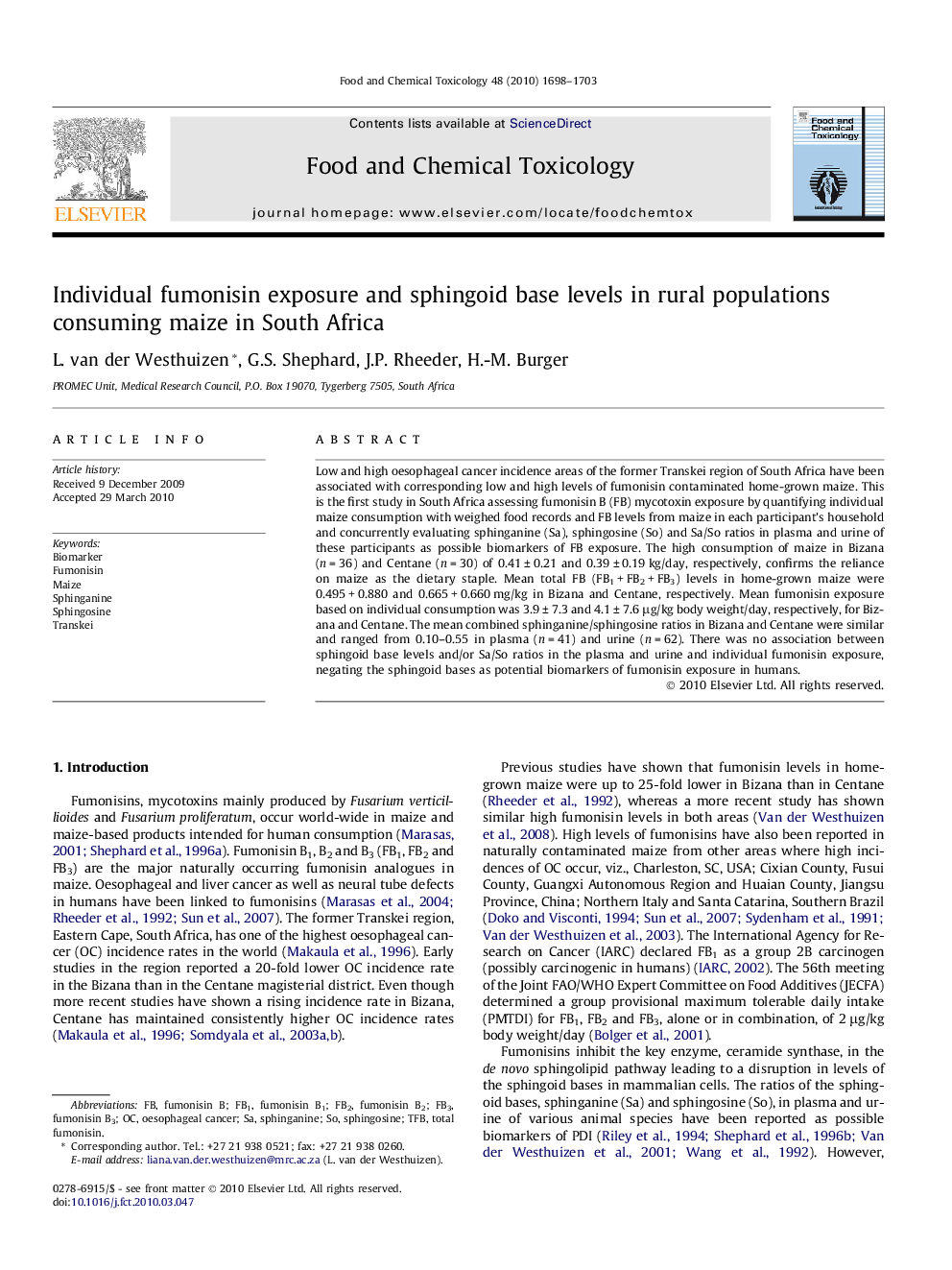| کد مقاله | کد نشریه | سال انتشار | مقاله انگلیسی | نسخه تمام متن |
|---|---|---|---|---|
| 5854257 | 1130885 | 2010 | 6 صفحه PDF | دانلود رایگان |

Low and high oesophageal cancer incidence areas of the former Transkei region of South Africa have been associated with corresponding low and high levels of fumonisin contaminated home-grown maize. This is the first study in South Africa assessing fumonisin B (FB) mycotoxin exposure by quantifying individual maize consumption with weighed food records and FB levels from maize in each participant's household and concurrently evaluating sphinganine (Sa), sphingosine (So) and Sa/So ratios in plasma and urine of these participants as possible biomarkers of FB exposure. The high consumption of maize in Bizana (n = 36) and Centane (n = 30) of 0.41 ± 0.21 and 0.39 ± 0.19 kg/day, respectively, confirms the reliance on maize as the dietary staple. Mean total FB (FB1 + FB2 + FB3) levels in home-grown maize were 0.495 + 0.880 and 0.665 + 0.660 mg/kg in Bizana and Centane, respectively. Mean fumonisin exposure based on individual consumption was 3.9 ± 7.3 and 4.1 ± 7.6 μg/kg body weight/day, respectively, for Bizana and Centane. The mean combined sphinganine/sphingosine ratios in Bizana and Centane were similar and ranged from 0.10-0.55 in plasma (n = 41) and urine (n = 62). There was no association between sphingoid base levels and/or Sa/So ratios in the plasma and urine and individual fumonisin exposure, negating the sphingoid bases as potential biomarkers of fumonisin exposure in humans.
Journal: Food and Chemical Toxicology - Volume 48, Issue 6, June 2010, Pages 1698-1703